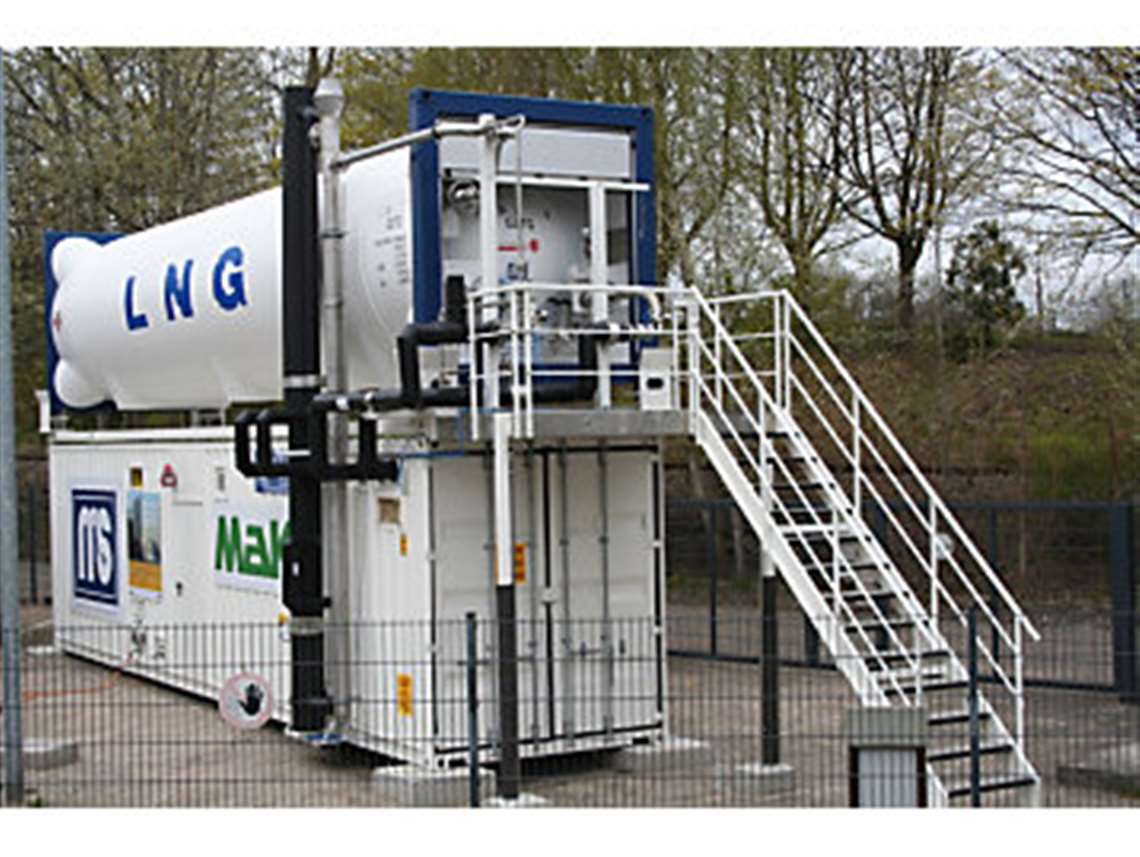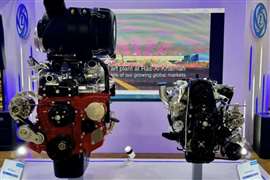Cat Marine Unveils First LNG Test Bed
28 January 2019

Caterpillar Marine has unveiled its first liquefied natural gas (LNG) test bed for gas-fueled engines at its facility in Kiel, Germany.
The LNG preparation unit consists of an LNG tank and a gas preparation unit, both in 40 ft. container size and both developed and provided by Marine Service GmbH, Hamburg.
Caterpillar said LNG solutions have great potential and Caterpillar is working to perfect the technology at its new Kiel test bed, but there’s still a lot to learn about LNG and the engineering required to maximize its potential. With its Kiel location, Caterpillar said will improve its understanding of the technology and enhance the service it provides to clients adopting LNG.
“LNG offers obvious benefits to marine power and it’s considered a true future fuel,” said Georg Gillert, engineering supervisor for Caterpillar Marine. “It burns cleaner than other fuels, emitting low amounts of nitrogen oxide (NOx), sulfur oxides (SOx), particulate matter and carbon dioxide. When handled properly, LNG offers a clear path to regulation compliance with all current and future standards.”
LNG also provides greater energy density than natural gas in its gaseous form, and it’s possible to store up to 600 times more LNG than standard natural gas.
LNG’s clean burning nature has drawn numerous vessel owners, and particularly those with an eye for future compliance, according to Caterpillar. Several marine industries, including cruise lines and chemical / oil tanker operations, have begun fitting their fleets with MaK power, and gas-fuelled engine prevalence will only increase over time.
“Caterpillar’s LNG test bed in Kiel is a milestone in LNG development,” said Gillert. “While LNG is a promising fuel, it does offer unique challenges. LNG has to be kept at extremely low temperatures to prevent it from vaporizing, and this requires additional gas handling components not found in other power systems. New engine and gas handling architecture is needed to take full advantage of LNG’s emissions benefits. Customized monitoring and control processes will also be needed to optimize fuel/air composition and safe engine operation.”
With that in mind, Caterpillar said it’s Kiel test bed will focus on the following:
- Familiarizing Caterpillar personnel with LNG capabilities. LNG is new for everyone in the industry, and the Kiel test bed will bring everyone at Caterpillar up to speed quickly.
- Demonstrating LNG benefits to Caterpillar’s clients. Knowledge is power, and it’s no different with LNG power. The Kiel test bed will arm Caterpillar sales personnel and dealers with valuable information regarding the technology. This information will be passed on to clients to help them make informed decisions regarding their vessels.
- Testing and improving LNG components. There’s plenty of room for improvement with LNG components, and Caterpillar will ensure its products, including its MaK engines, are the immediate beneficiaries of LNG advancements.
- Developing LNG plants for actual operations. Again, LNG handling is something that has only been made possible in recent years, so further optimization is needed to efficiently support refueling operations in the field. The Kiel test bed will assist with this optimization, and ready field personnel for the challenges LNG poses.
- Facilitate customer training to not only become familiar with LNG, but also teach customers important safety information regardingLNG handling and operational procedures.
POWER SOURCING GUIDE
The trusted reference and buyer’s guide for 83 years
The original “desktop search engine,” guiding nearly 10,000 users in more than 90 countries it is the primary reference for specifications and details on all the components that go into engine systems.
Visit Now
STAY CONNECTED




Receive the information you need when you need it through our world-leading magazines, newsletters and daily briefings.
CONNECT WITH THE TEAM












